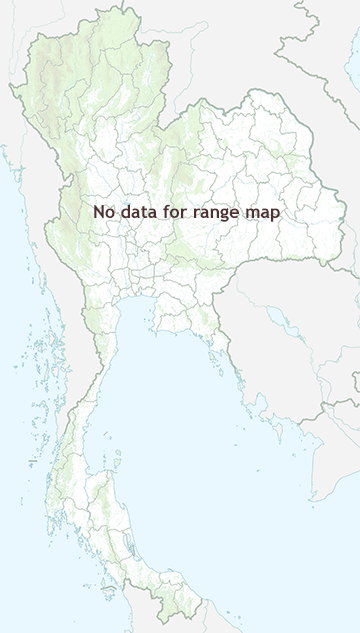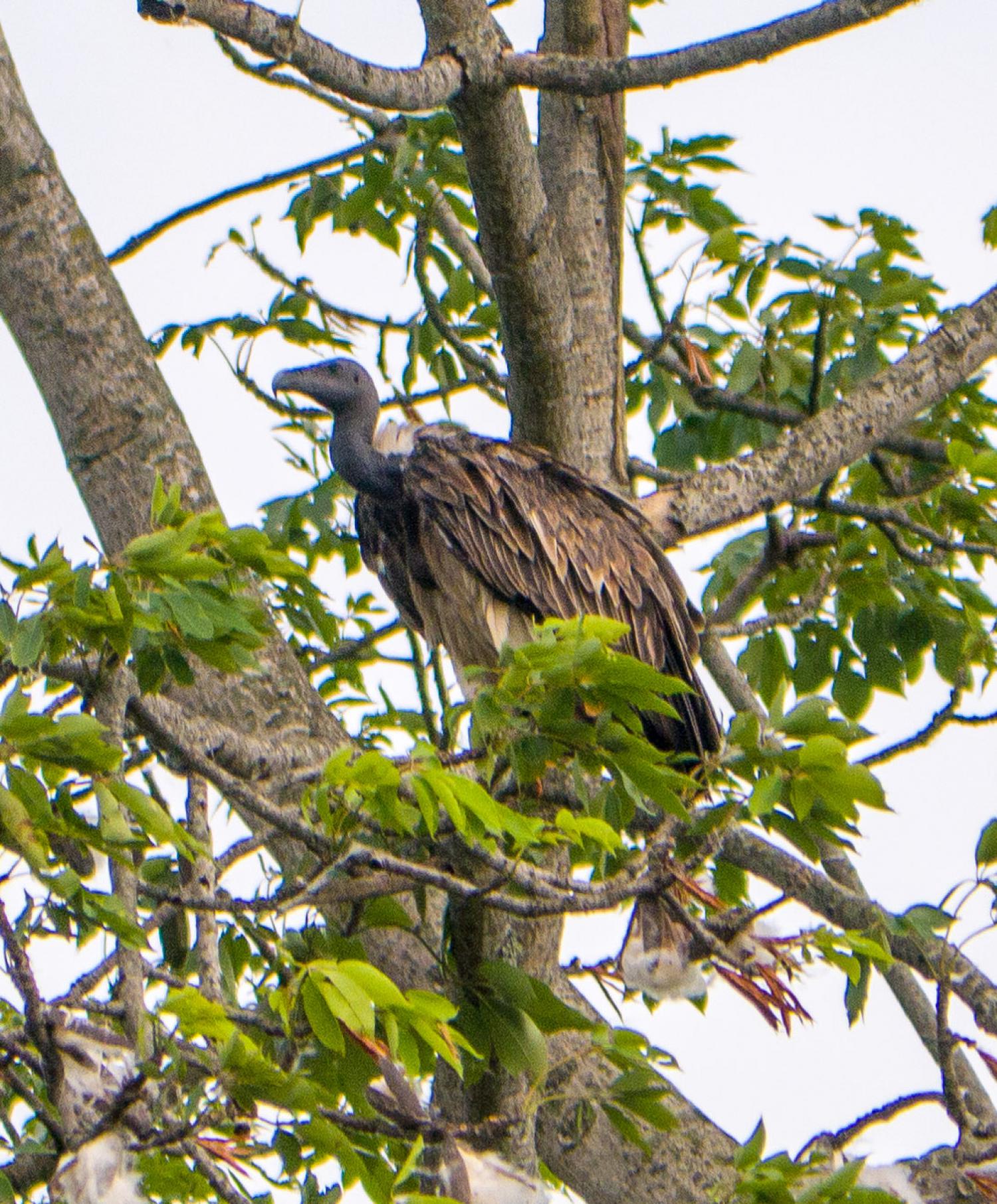Species of Thailand
Slender-billed vulture
Gyps tenuirostris
George Robert Gray, 1844
In Thai: อีแร้งสีน้ำตาล
The slender-billed vulture (Gyps tenuirostris) is an Old World vulture species native to sub-Himalayan regions and Southeast Asia. It is Critically Endangered since 2002 as the population on the Indian subcontinent has declined rapidly.
It used to be the Indian vulture, under the name of “long-billed vulture”. However, these two species have non-overlapping distribution ranges and can be immediately told apart by trained observers, even at considerable distances. The Indian vulture is found only to the south of the Ganges and breeds on cliffs while the slender-billed vulture is found along and nests in trees.
Description
At 80 to 95 cm, in length, this mid-sized vulture is about the same size as its sister species, the Indian vulture. This vulture is mostly grey with a pale rump and grey undertail coverts. The thighs have whitish down. The neck is long, bare, skinny and black. The black head is angular and narrow with the dark bill appearing narrow midway. The ear opening is prominent and exposed.
Distribution and habitat
The slender-billed vulture is found in India from the Gangetic plain north, west to Himachal Pradesh, south potentially as far as northern Odisha, and east through Assam. It is also found in north and central Bangladesh, southern Nepal, Burma and Cambodia.
Status and conservation
This species has suffered a marked decline in its numbers in recent years. The population of this species and the Indian vulture declined by 97% overall and in India annual decline rates for both species averaged over 16% between 2000–2007. Wild populations remain from northern and eastern India through southern Nepal and Bangladesh, with a small population in Burma. The only breeding colony in Southeast Asia is in the Steung Treng province of Cambodia. This colony is thought to number about 50–100 birds. The survival of the vultures in Cambodia may have been partly because diclofenac, which is poisonous to vultures, is not available there. The Royal Society for the Protection of Birds (RSPB) has placed the approximate number of slender-billed vultures living beyond confines at about 1, 000 in 2009 and predictions estimate total extinction within the next decade amongst the wild population.
The slender-billed vulture is a protected species listed on the appendix II list of CITES, because its numbers have declined rapidly. Its decline is largely due to the use of the non-steroidal anti-inflammatory drug (NSAID) diclofenac in working farm animals. Diclofenac is poisonous to vultures, causing kidney failure, and is being replaced by meloxicam (another NSAID), which is not toxic to vultures. The retail sale of Diclofenac is banned by law in India; however, Diclofenac is still acquired illegally and applied to livestock.
Captive-breeding programs in India are aiming to conserve the species, and it is hoped that vultures can be released back in the wild when the environment is free of diclofenac. Joint efforts between the RSPB and the Zoological Society of London resulted in the first successful captive breeding in 2009. Two slender-billed vultures hatched and are being independently cared for in Haryana and West Bengal.
This article uses material from Wikipedia released under the Creative Commons Attribution-Share-Alike Licence 3.0. Eventual photos shown in this page may or may not be from Wikipedia, please see the license details for photos in photo by-lines.
Category / Seasonal Status
Wiki listed status (concerning Thai population): Extirpated, critically endangered
BCST Category: Recorded in an apparently wild state within the last 50 years
BCST Seasonal statuses:
- Resident or presumed resident
- Extirpated
- vagrant (non-breeding visitor with three or fewer records)
Scientific classification
- Kingdom
- Animalia
- Phylum
- Chordata
- Class
- Aves
- Order
- Accipitriformes
- Family
- Accipitridae
- Genus
- Gyps
- Species
- Gyps tenuirostris
Common names
- Thai: อีแร้งสีน้ำตาล
Conservation status

Critically Endangered (IUCN 3.1)

Critically Endangered (BirdLife)

Critically Endangered (ONEP)

Critically Endangered (BCST)
Photos
Please help us review the bird photos if wrong ones are used. We can be reached via our contact us page.
Range Map

